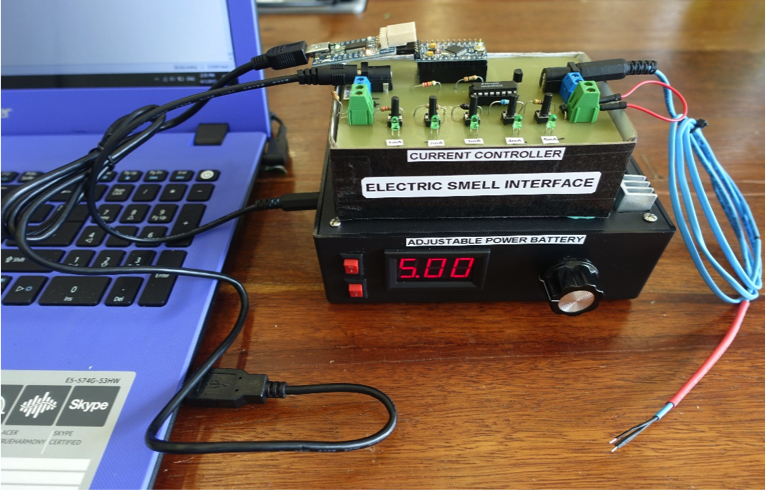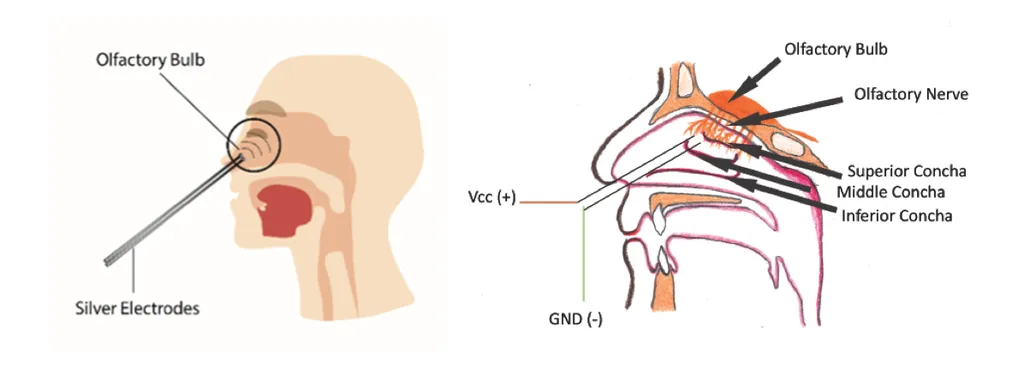Researchers at The Imagineering Institute in Malaysia have demonstrated a technique that would allow smells to be transferred and sensed over the internet. The ‘Digital Smell Interface’ works by direct electrical stimulation of the smell receptor nerves deep in the nose.
Last year, we published an editorial on why smell is so difficult to bring to VR. All previous attempts, such as Vasqo, have used chemical powders which are released in a specific combination just below the nose. The main problems with this type of approach are that the chemicals need to be refilled frequently (which is expensive and annoying) and the systems can only replicate a limited number of smells.

The electrical approach taken by TII means that there are no chemicals to refill, no powders in the air, and almost any smell could theoretically be replicated. In fact, smells could be a digital file or even transferred over the internet, just like visual and auditory information today. This could let you literally smell the roses in a virtual garden, or bring a medieval world to life with the pungent smells of the time.
The researchers say that the current used is only a few miliamps, so there is no pain or safety issue involved. Right now, what makes this approach impractical for consumers however is that it requires the placement of rods with electrodes on the end up your nostrils. For some VR enthusiasts, this is a more than acceptable price to pay to smell the virtual world, but most consumers are unlikely to want to put rods in their nose just for VR.
For smell to become part of mainstream VR, a way to apply the current in a less invasive way (perhaps wirelessly) must be found.



























